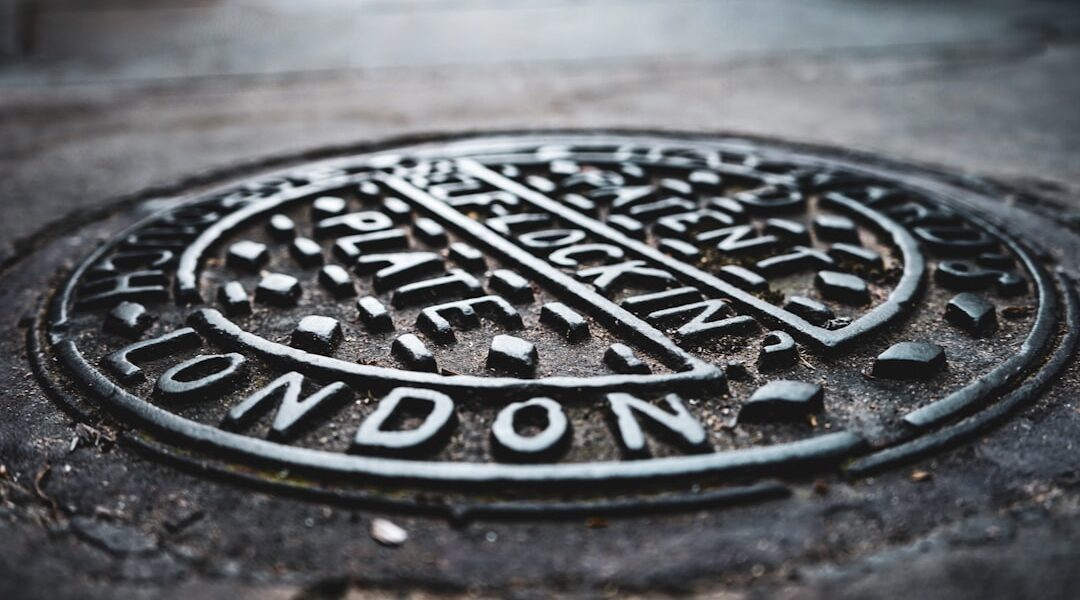A plate compactor, also known as a vibrating plate or a tamper, is a construction tool used to compress and flatten soil, gravel, or asphalt. It features a heavy steel plate mounted on a base that vibrates at high frequencies to compact the material beneath it. The vibrations eliminate air voids and settle particles, creating a more stable and solid surface.
Plate compactors are available in various sizes and weights, with larger models typically used for extensive projects like road construction, while smaller models suit residential and smaller commercial applications. Plate compactors are crucial for establishing a solid and stable foundation for construction projects such as building foundations, driveways, walkways, and patios. They are also used in landscaping and roadwork to prepare surfaces for paving or to compact backfilled trenches.
The compaction process increases soil load-bearing capacity, reduces settling or shifting risks, and enhances the durability and longevity of the finished surface. These versatile and efficient tools can significantly expedite the construction process and ensure high-quality results. Plate compactors come in forward and reversible models.
Forward plate compactors are designed for use in open areas with ample maneuvering space, while reversible plate compactors are more suitable for confined spaces and tight corners. The choice between the two types depends on project requirements and available workspace. Plate compactors may be powered by gasoline engines or electric motors.
Gasoline models offer greater mobility and power, while electric models are more environmentally friendly and suitable for indoor use. Understanding the different types and features of plate compactors is essential for selecting the appropriate equipment for a given project.
Key Takeaways
- Plate compactors are used to compress soil, gravel, and asphalt to create a solid and level surface.
- Renting a plate compactor can save money and storage space, as well as provide access to different models for specific projects.
- Consider the size, weight, and compaction force of the plate compactor when choosing the right one for your project.
- When using a plate compactor, ensure proper safety gear, proper technique, and attention to the surface being compacted.
- Regular maintenance and safety checks are essential for the safe and efficient operation of a plate compactor.
Benefits of Renting a Plate Compactor
Cost Savings
One of the primary advantages of renting a plate compactor is the significant cost savings. Plate compactors can be expensive to purchase, and for projects that only require occasional compaction, renting is a more economical option.
Convenience and Flexibility
Renting a plate compactor also eliminates the need for long-term storage and maintenance of the equipment, saving both space and time. Additionally, renting allows access to the latest models and technology without the upfront investment, ensuring that you have access to the most efficient and reliable equipment for your project. This flexibility also extends to the duration of use, as renting allows you to have the equipment for as long as needed without the commitment of ownership.
Access to Professional Support
Renting a plate compactor provides access to professional advice and support from rental companies, ensuring that you have the right equipment and guidance for your project. This support can be invaluable in ensuring the success of your project.
Overall, renting a plate compactor offers cost savings, flexibility, access to the latest technology, and professional support, making it a practical choice for many construction and landscaping projects.
Choosing the Right Plate Compactor for Your Project

When choosing a plate compactor for your project, several factors should be considered to ensure that you select the most suitable equipment. The first consideration is the type of material to be compacted. Different plate compactors are designed for specific materials such as soil, gravel, or asphalt, so it is essential to choose a model that is suitable for the type of surface you will be working with.
The size and weight of the plate compactor are also important factors to consider. Larger and heavier plate compactors are more suitable for larger-scale projects and heavier materials, while smaller models are more maneuverable and suitable for residential or smaller commercial projects. The power source of the plate compactor is another important consideration.
Gasoline-powered plate compactors offer greater mobility and power, making them suitable for outdoor use and larger projects. Electric plate compactors, on the other hand, are more environmentally friendly and suitable for indoor use or projects in enclosed spaces. The choice between gasoline and electric models depends on the specific requirements of your project and the availability of power sources.
Additionally, consider the frequency of use and the duration of your project when choosing a plate compactor. For occasional or one-time use, renting a plate compactor may be more practical than purchasing one outright. It is also important to consider the compaction force and frequency of the plate compactor.
Higher compaction force and frequency result in more efficient and effective compaction, making it easier to achieve a solid and stable base for your project. Finally, consider the maneuverability and ease of operation of the plate compactor, especially if you will be working in confined spaces or tight corners. By considering these factors, you can choose the right plate compactor for your project to ensure efficient and effective compaction.
Tips for Using a Plate Compactor
| Tips for Using a Plate Compactor |
|---|
| 1. Start the compactor on a flat, stable surface |
| 2. Compact in layers for better results |
| 3. Keep the compactor moving at a steady pace |
| 4. Use proper safety gear, including ear protection and gloves |
| 5. Check the compactor’s engine oil and fuel levels before each use |
Using a plate compactor effectively requires proper technique and safety precautions to ensure optimal results and minimize the risk of injury. Before operating the plate compactor, it is essential to inspect the equipment for any damage or defects and ensure that all safety features are in place and functioning correctly. It is also important to wear appropriate personal protective equipment such as gloves, safety goggles, ear protection, and sturdy footwear to protect against potential hazards during operation.
When using a plate compactor, it is important to start with a flat and stable surface to prevent tipping or instability during operation. Begin by positioning the plate compactor at one edge of the area to be compacted and start the engine according to the manufacturer’s instructions. Slowly push the plate compactor forward while maintaining a firm grip on the handle to guide its direction.
It is important to move at a steady pace to ensure even compaction without overworking the equipment. To achieve optimal compaction results, it is important to make multiple passes over the entire area, overlapping each pass slightly to ensure uniform compaction. It is also important to avoid excessive vibration by not forcing the plate compactor forward or applying excessive pressure on the handle.
Proper technique and consistent movement will help achieve thorough compaction without causing unnecessary strain on the equipment or operator. After completing the compaction process, it is important to turn off the engine according to the manufacturer’s instructions and perform any necessary maintenance or cleaning of the equipment. Proper maintenance will help prolong the life of the plate compactor and ensure its continued effectiveness for future projects.
By following these tips for using a plate compactor, you can achieve efficient and effective compaction while ensuring safety and optimal results.
Maintenance and Safety Considerations
Proper maintenance of a plate compactor is essential to ensure its continued effectiveness and longevity. Regular maintenance tasks include checking and replacing worn or damaged parts such as belts, filters, spark plugs, and engine oil according to the manufacturer’s recommendations. It is also important to inspect the base plate for any signs of wear or damage that may affect its performance.
Regular cleaning of the equipment after each use will help prevent buildup of dirt and debris that can affect its operation. In addition to regular maintenance, it is important to store the plate compactor in a clean and dry environment to prevent rust or corrosion. Proper storage will help prolong the life of the equipment and ensure that it remains in good working condition for future projects.
It is also important to follow all safety guidelines provided by the manufacturer when operating a plate compactor to minimize the risk of injury. Safety considerations when using a plate compactor include wearing appropriate personal protective equipment such as gloves, safety goggles, ear protection, and sturdy footwear. It is also important to ensure that all safety features of the equipment are in place and functioning correctly before operation.
Proper technique when using a plate compactor will help minimize strain on both the equipment and operator while achieving optimal results. By following proper maintenance and safety considerations when using a plate compactor, you can ensure its continued effectiveness and longevity while minimizing the risk of injury during operation.
Initial Costs and Ongoing Expenses
The initial cost of purchasing a plate compactor can be substantial, especially for high-quality models with advanced features. Additionally, there are ongoing costs associated with ownership, such as maintenance, repairs, storage, and depreciation over time.
Renting: A Cost-Effective Alternative
On the other hand, renting a plate compactor offers cost savings in several areas. The upfront cost of renting is typically much lower than purchasing outright, making it a more practical option for projects that only require occasional or one-time use. Renting also eliminates ongoing costs such as maintenance, repairs, storage space, and depreciation since you only pay for the duration of use without any long-term commitment.
Access to Advanced Technology and Flexibility
Another cost consideration when comparing renting vs buying a plate compactor is access to the latest technology. Renting allows you to choose from a wide range of models with advanced features without having to invest in purchasing new equipment each time technology advances. This ensures that you have access to efficient and reliable equipment without incurring additional costs associated with ownership. Overall, renting offers significant cost savings in terms of upfront investment, ongoing maintenance costs, access to advanced technology, and flexibility in choosing equipment for each specific project.
Finding the Best Plate Compactor Rental Option

When looking for a plate compactor rental option, it is important to consider several factors to ensure that you choose the best equipment for your project. The first step is to research reputable rental companies in your area that offer a wide range of plate compactors with different sizes, power sources, and features. It is important to choose a rental company with a good reputation for quality equipment and reliable service.
Once you have identified potential rental companies, it is important to compare their rental terms including rates, duration options, delivery or pickup services, as well as any additional fees or charges associated with renting a plate compactor. Some rental companies may offer flexible rental terms such as daily, weekly, or monthly rates depending on your specific project needs. It is also important to inspect the equipment before renting to ensure that it is in good working condition with all necessary safety features in place.
Ask about any maintenance or cleaning requirements before returning the equipment to avoid any additional charges. Finally, consider any additional support or guidance offered by rental companies such as professional advice on choosing the right equipment for your project or technical support during operation. By considering these factors when finding the best plate compactor rental option, you can ensure that you have access to reliable equipment with professional support for your project needs.
If you’re considering renting a plate compactor, you may also be interested in learning about the benefits of using one for your construction project. Check out this article on metricsgoddess.com to discover how a plate compactor can help you achieve a more stable and durable surface for your project.
FAQs
What is a plate compactor?
A plate compactor is a piece of construction equipment used to compact soil, gravel, and asphalt. It is commonly used in road construction, landscaping, and other construction projects to create a solid and stable base.
How does a plate compactor work?
A plate compactor works by using a vibrating plate to compress and compact the material underneath it. The vibration helps to settle the particles in the soil or gravel, creating a more stable and solid surface.
When is it necessary to rent a plate compactor?
It is necessary to rent a plate compactor when you need to compact soil, gravel, or asphalt for a construction project. This could include tasks such as preparing a base for a patio, driveway, or walkway, or compacting soil for landscaping.
What are the benefits of renting a plate compactor?
Renting a plate compactor allows you to access the equipment you need for a specific project without having to purchase it outright. This can save you money and storage space, and ensures that you have the right tool for the job.
How do I choose the right plate compactor for my project?
When choosing a plate compactor for your project, consider the size and type of material you need to compact, as well as the size of the area you need to cover. It’s also important to consider the compactor’s weight and vibration frequency to ensure it is suitable for the job.




